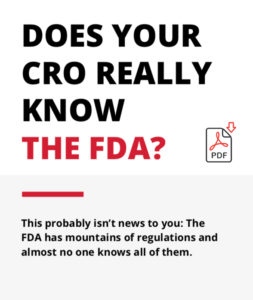RWD and RWE for Medical Devices: Guidance for the use of Real-World Evidence
 The guidance of use Real World Data (RWD) and RWE for medical devices was released in August 2017 and was to provide clarifications of how and what RWD and RWE could be used in FDA regulatory process. This guidance included the criteria for sufficient quality of RWD to generate RWE for medical device use.
The guidance of use Real World Data (RWD) and RWE for medical devices was released in August 2017 and was to provide clarifications of how and what RWD and RWE could be used in FDA regulatory process. This guidance included the criteria for sufficient quality of RWD to generate RWE for medical device use.
RWD for medical devices could be the data collected either by administrative databases; or abstracted, aggregated and stored in disease- or treatment-specific databases (i.e. registries); or collected and aggregated through other means. Accuracy is essential when compared to verifiable source documentation for RWD elements.
Verifiable source documentation for RWD elements includes paper or electronic inpatient and outpatient medical records and case histories, diagnostic laboratory and imaging data, patient preference information, patient-reported outcome measures, UDI and other device identifiers, and performance data that exist within the device such as self-diagnostics, error codes, and patient diagnoses/treatments delivered.
The general consideration for use of RWD in medical devices is whether RWD used to generate RWE are of sufficient quality or not. The threshold for sufficient quality of RWD varies depending on the specific regulatory use of the evidence. In principle, sponsors should select appropriate RWD sources based on their suitability to address specific regulatory questions.
The aggregation of RWD (e.g. in medical device registries) and RWE can be especially useful for post-market monitoring of the safety of products during their use in real world settings and additional evidence for effectiveness. (For more detailed information, please read next section “What can RWD be used for”).
FDA recommends use of the pre-submission process when considering the development of a study using RWD in a regulatory submission.
Next Steps:
- Read more blogs on Real World Data
- See how Princeton’s services can help you.